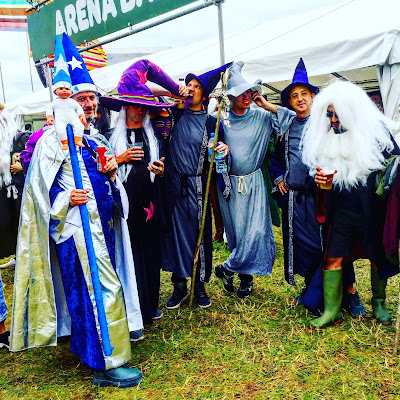Agonda beach started with just a few huts on the beach, then within a few years mushroomed into a mega hutoppoliss, groups of huts competing to see who could create the most luxurious environment for guests who pay top dollar to come and spend Christmas and the new year here. Each group of huts has its restaurant area, overlooking the sea, so that guests can sip their drinks as they watch the sun sink into the ocean every evening.
The other side of the road, where a few villagers live, has similarly grown, with each villager building rooms, houses, whatever they can fit into their piece of land. Narrow dirt paths lead between the houses, which are so near together that you can lean out of your window and almost touch the house next door. But this is where you can find the cheap rooms, if you get here early enough. I have a traditional old room, built with a gap between the wall and the ceiling. The wind blows all sort of things through the gap - leaves, grit, small feathers, so I have to keep sweeping the floor. But it's cheap and I have table and chair to work at my computer, and luxury of luxuries - a fridge!
Yesterday there was a funeral in Agonda. The coffin arrived in the back of an old red lorry, together with four priests, clad in long robes with white lace stoles, covered by short red satin stoles. They clambered down from the back of the lorry, their lace stoles fluttering about them. Men heaved the coffin down and carried it, accompanied by the priests, to the church. At the entrance they took the lid off the coffin and propped it up against the church wall. The coffin was full of flowers. Presumably there was a body under the flowers, but I was too far away to see.
A bus full of mourners drove right into the church precinct, followed by several people on motor bikes. Everyone converged on the church
The other side of the road, where a few villagers live, has similarly grown, with each villager building rooms, houses, whatever they can fit into their piece of land. Narrow dirt paths lead between the houses, which are so near together that you can lean out of your window and almost touch the house next door. But this is where you can find the cheap rooms, if you get here early enough. I have a traditional old room, built with a gap between the wall and the ceiling. The wind blows all sort of things through the gap - leaves, grit, small feathers, so I have to keep sweeping the floor. But it's cheap and I have table and chair to work at my computer, and luxury of luxuries - a fridge!
Yesterday there was a funeral in Agonda. The coffin arrived in the back of an old red lorry, together with four priests, clad in long robes with white lace stoles, covered by short red satin stoles. They clambered down from the back of the lorry, their lace stoles fluttering about them. Men heaved the coffin down and carried it, accompanied by the priests, to the church. At the entrance they took the lid off the coffin and propped it up against the church wall. The coffin was full of flowers. Presumably there was a body under the flowers, but I was too far away to see.
A bus full of mourners drove right into the church precinct, followed by several people on motor bikes. Everyone converged on the church





































